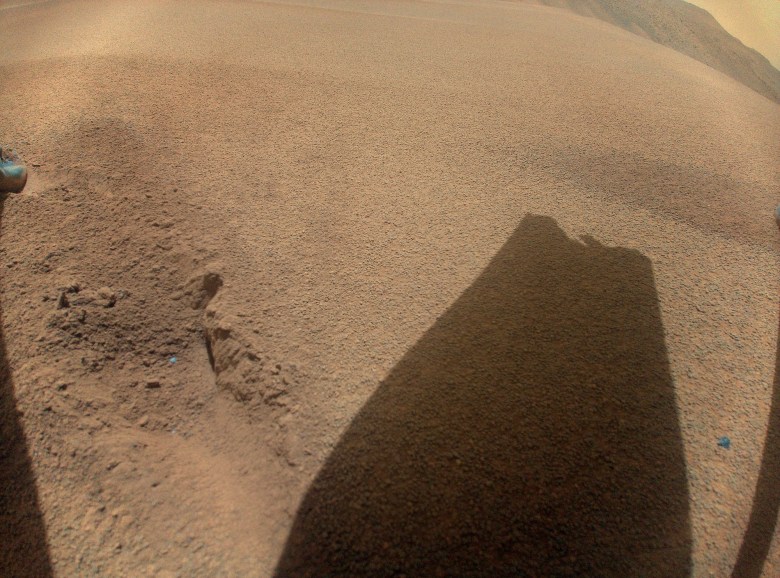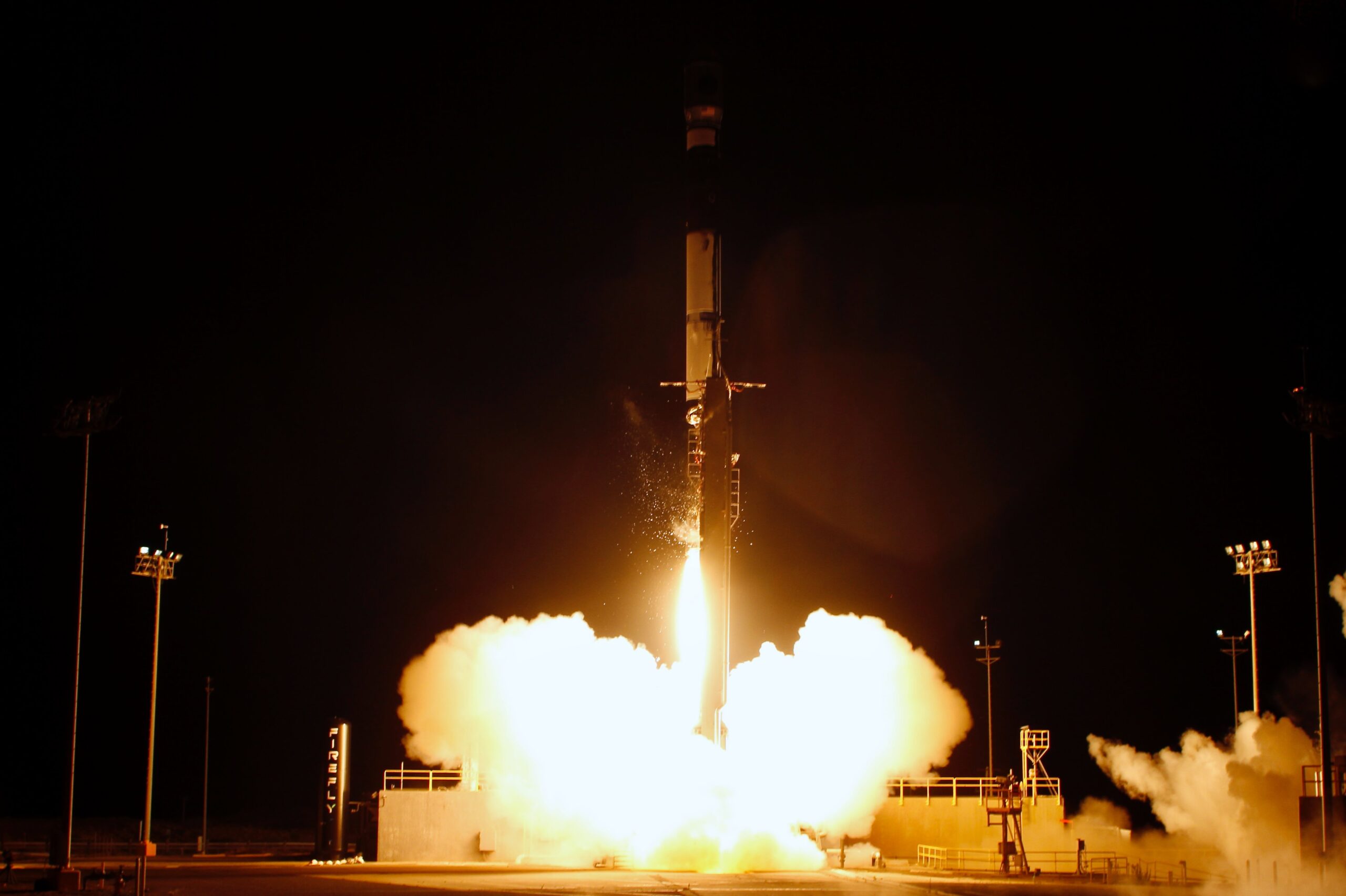Updated 6:45 p.m. Eastern with comments from press briefing.
WASHINGTON — NASA has declared the end of the mission for the Ingenuity Mars helicopter after 72 flights, exceeding even the most optimistic expectations.
NASA announced Jan. 25 that at least one of Ingenuity’s rotor blades sustained damage on its most recent flight Jan. 18. On that flight, contact between the helicopter and the Perseverance Mars rover was interrupted during the helicopter’s descent, but restored the following day.
“It is bittersweet that I must announce that Ingenuity, the little helicopter that could,” NASA Administrator Bill Nelson said in a video message on social media, “has now taken its last flight on Mars.”
The Jan. 18 flight was intended to be a simple up-and-down flight to determine the helicopter’s location after it executed an emergency landing on its previous flight Jan. 6. The helicopter ascended to its planned altitude of 12 meters and hovered for 4.5 seconds before beginning its descent at a speed of one meter per second. Contact was interrupted when Ingenuity was about one meter above the surface.
While Ingenuity is upright and in communication with controllers, images it returned showed damage to the tip of one of its rotor blades. “We’re investigating the possibility that the blade struck the ground,” Nelson said. NASA said in a statement it was still studying what caused the loss of communications and how the helicopter landed.

In a call with reporters, Teddy Tzanetos, Ingenuity project manager at NASA’s Jet Propulsion Laboratory, said about 25% of the rotor blade was lost, rendering Ingenuity unflyable. He said given the speed of the rotors — about 2,500 rpm — it is likely other blades were also damaged at landing, something the project team hopes to confirm with additional images. No other major subsystems on the helicopter show signs of damage.
“Whether or not the blade strike occurred, which led to the communications loss, or there was a communications loss and a power brownout which then led to the rotor strike, we will never know,” he said, because of a loss of data during the incident, but added that the project team would try to piece together their best guess of what happened with the data they do get.
One possibility is that the featureless terrain that Ingenuity was flying over may have confused the helicopter’s navigation system. Such systems work by tracking features on the surface and correlating them, throwing out spurious ones. “The danger is when you run out of features, you don’t have very many to navigate on. You’re not able to establish what that consensus is and you end up tracking the wrong kinds of features,” said Håvard Grip, the “pilot emeritus” for Ingenuity, on the call.
In such a scenario, he said, the helicopter may think it’s moving horizontally away from its target landing site and overcorrects. “It’s likely it made an aggressive maneuver to try and correct that upon landing, and that would have accounted for sideways motion and tilted the helicopter,” he said. That could either have caused a blade to strike the ground or to lose power before landing.
History and legacy
Ingenuity was included on the Mars 2020 mission with the Perseverance rover as a technology demonstration, with plans to perform no more than five flights over one month. The inclusion of Ingenuity was originally controversial because of concerns by scientists that helicopter operations would detract from the rover’s mission.
Ingenuity made its first flight on Mars in April 2021, two months after the Perseverance landing. Those flights went so well that NASA decided to extend Ingenuity’s mission beyond the planned five flights. Ingenuity was repurposed into an aerial scout for Perseverance. Over its 72 flights Ingenuity traveled about 17 kilometers and spent more than two hours in the air.
The success of Ingenuity helped alter plans for NASA’s efforts to return samples from Mars being collected by Perseverance. NASA announced in July 2022 that it would fly two helicopters based on Ingenuity on a future Sample Retrieval Lander mission in place of a rover that would have been provided by the European Space Agency. The helicopters would be used to pick up a cache of samples left by Perseverance on the Martian surface and bring them to the lander if that rover is not able to directly deliver other samples it has collected to the lander.
“Ingenuity absolutely shattered our paradigm of exploration in introducing this new dimension of aerial mobility,” said Lori Glaze, director of NASA’s planetary science division, on the call.
It also vindicated a strategy of flying technology demonstrations along with science missions on a “do-no-harm” basis that can feed forward into future missions. Another example is the Deep Space Optical Communications payload on the Psyche mission that successfully streamed a high-definition video to Earth from a distance of 31 million kilometers last month.
“These missions lay the foundation for a bright future,” said Laurie Leshin, director of JPL, on the call. “It’s so critically important that we continue to look for places, look for opportunities, to fly these things, to get that flight experience.”
“People love these demos. They love to see how we can push the boundaries,” she added.
NASA donated a prototype of Ingenuity, used for ground tests, to the National Air and Space Museum last month. Tzanetos said then that the experience flying Ingenuity was helping the design of the helicopters planned for Mars Sample Return, such as improved atmospheric and thermal modeling.
“We had all imagined while working on Ingenuity that our kids’ generation or our grandchildren’s generation were then going to build the second version,” he said at the Dec. 15 event where NASA donated the Ingenuity model to the museum. “We never imagined that, while Ingenuity was still flying, we would be working on the next version of helicopters for Mars.”



